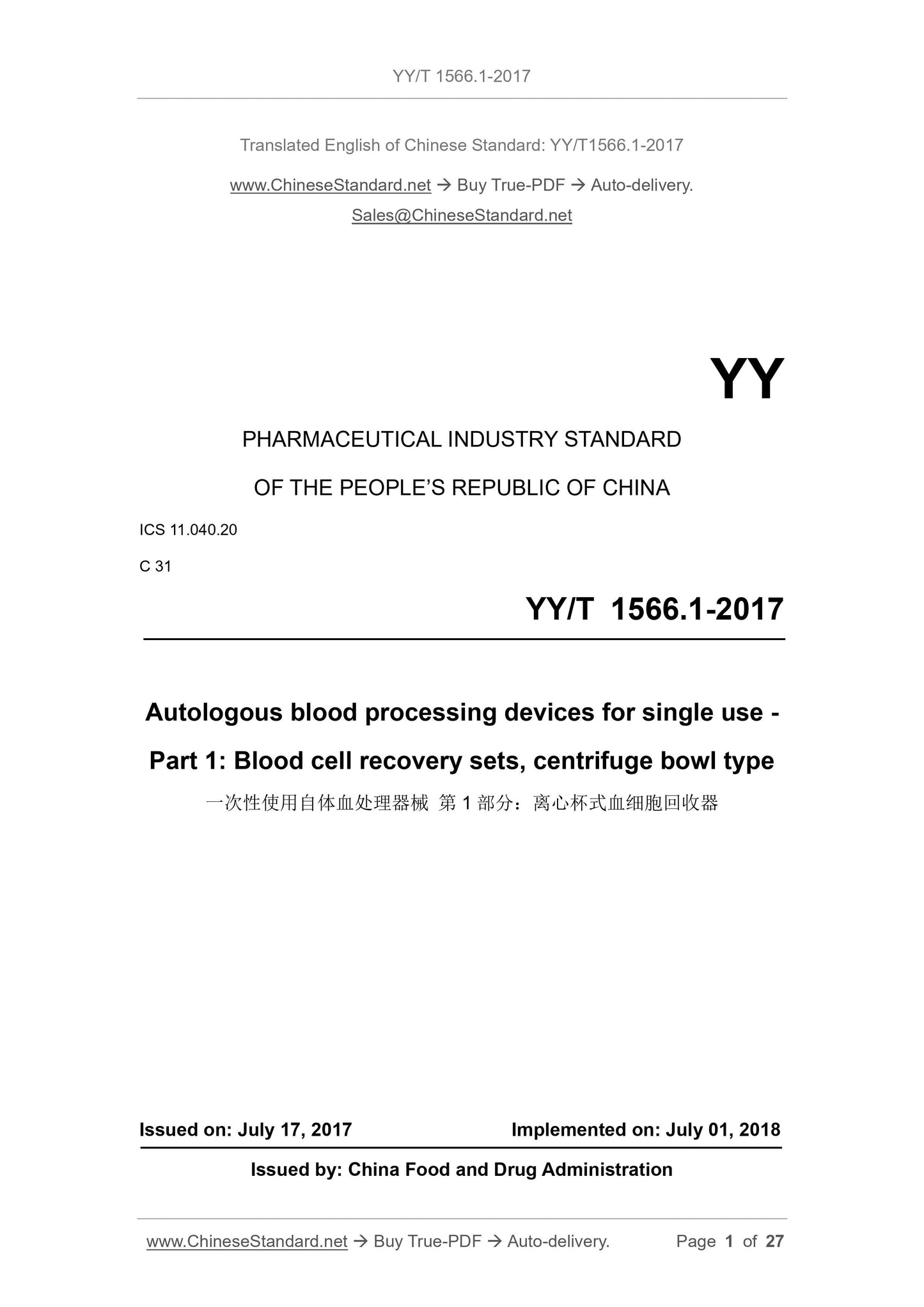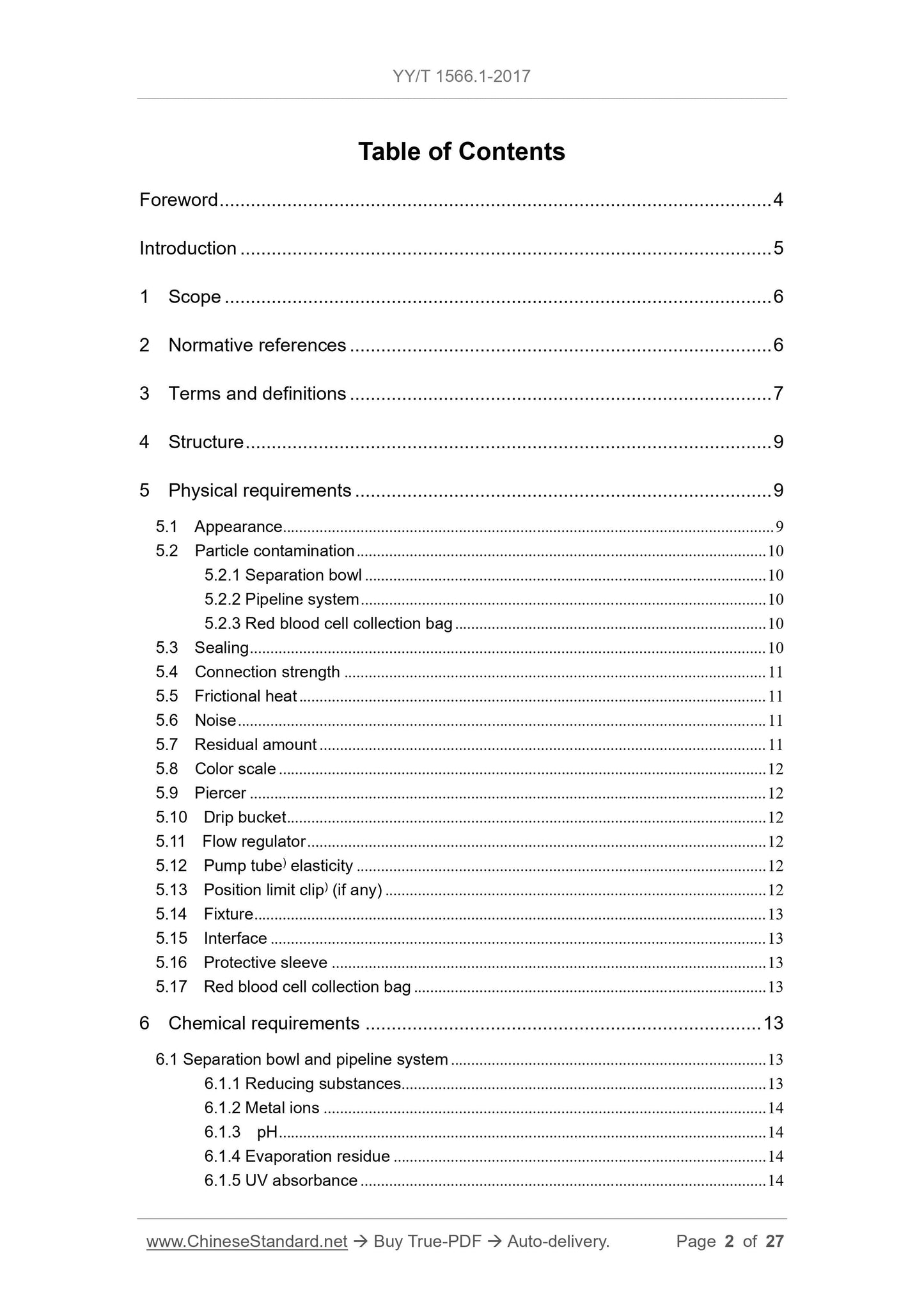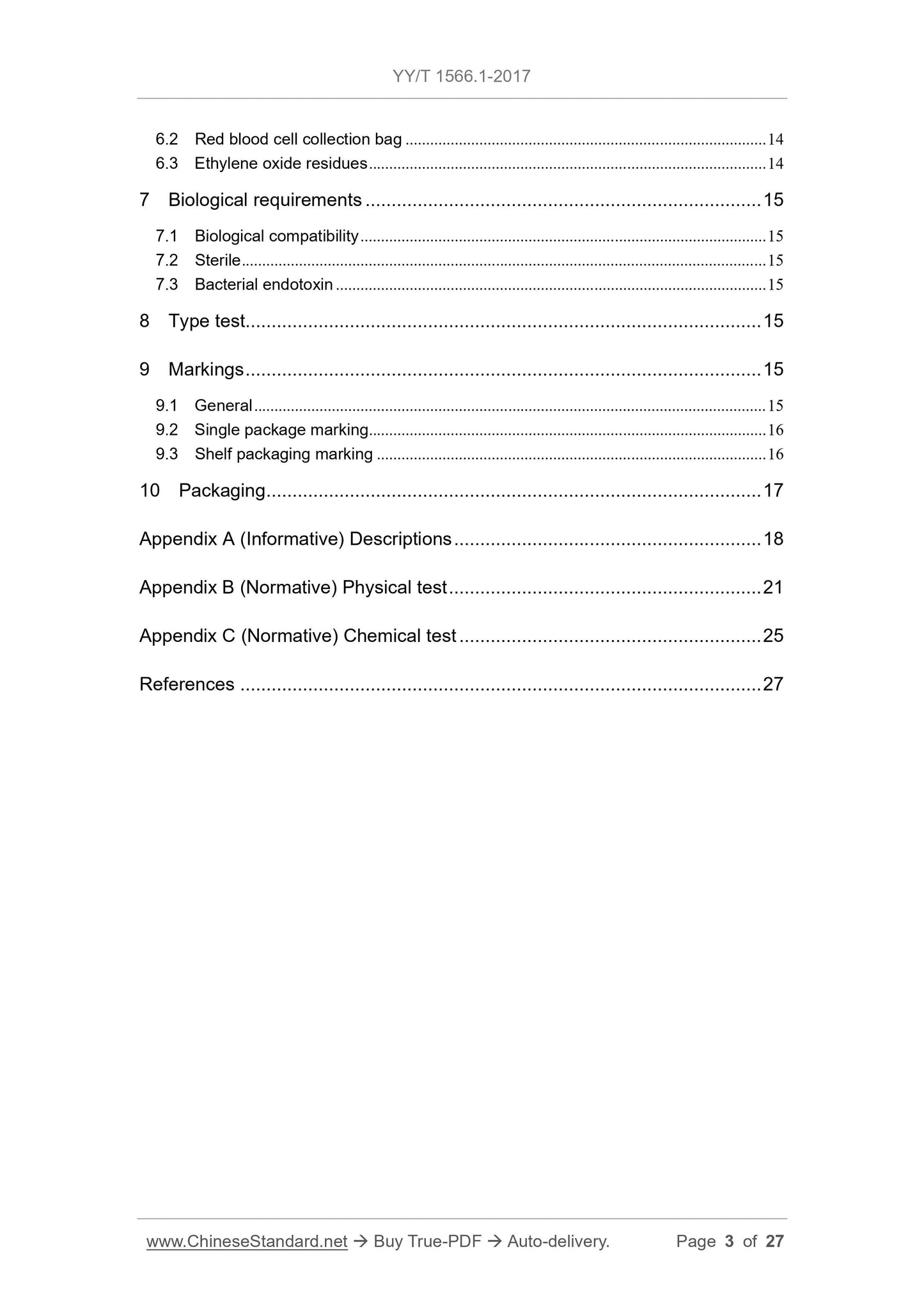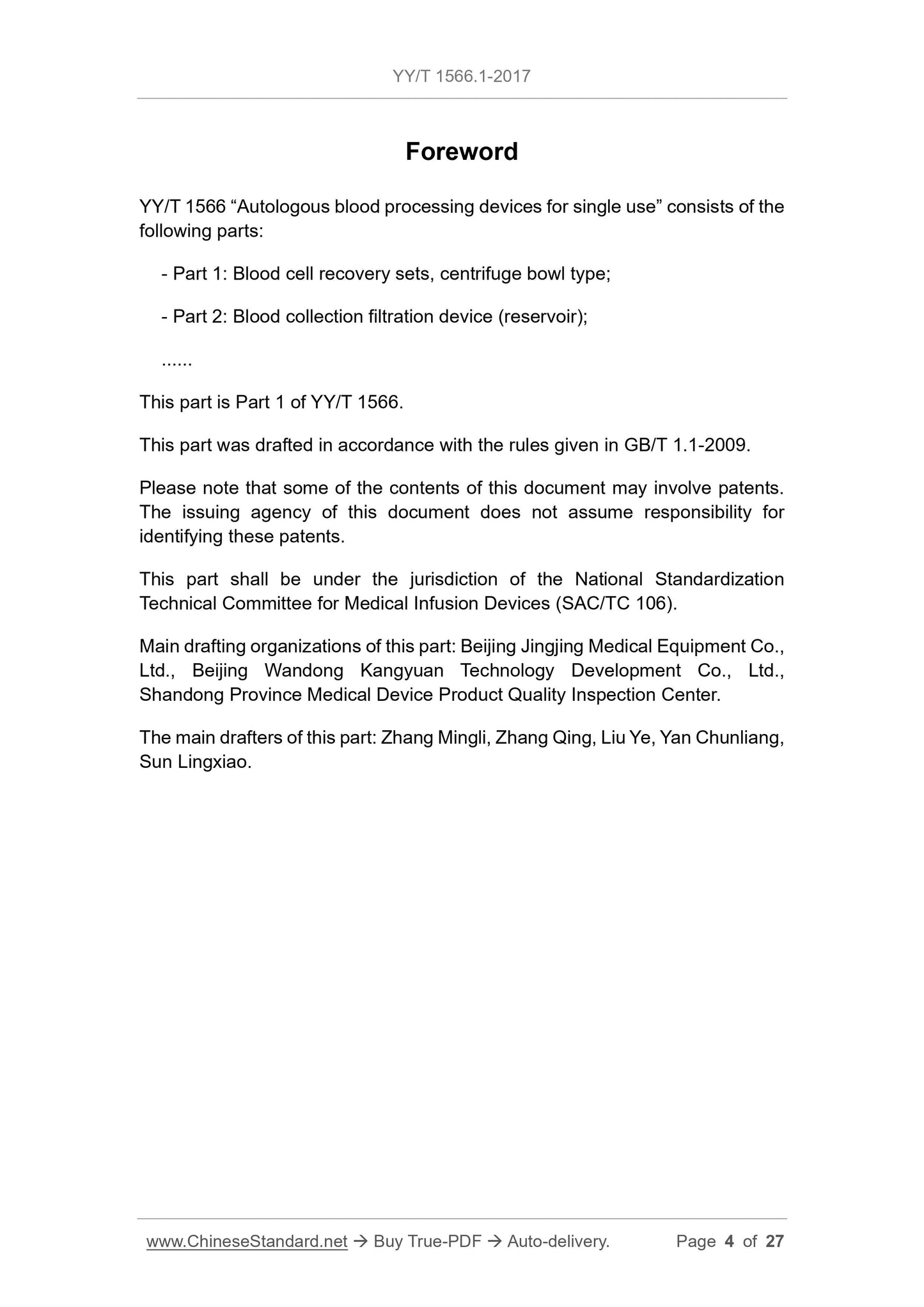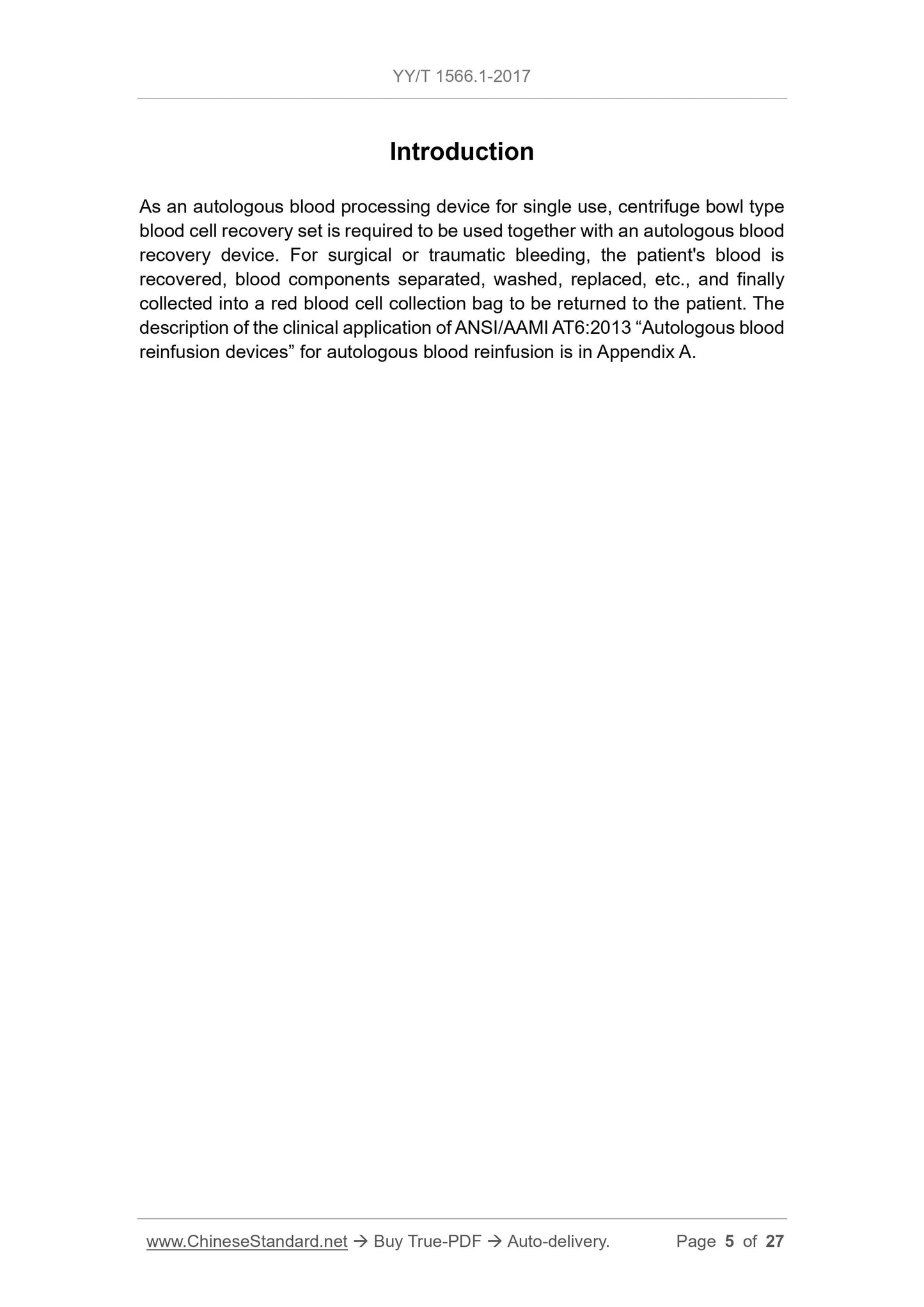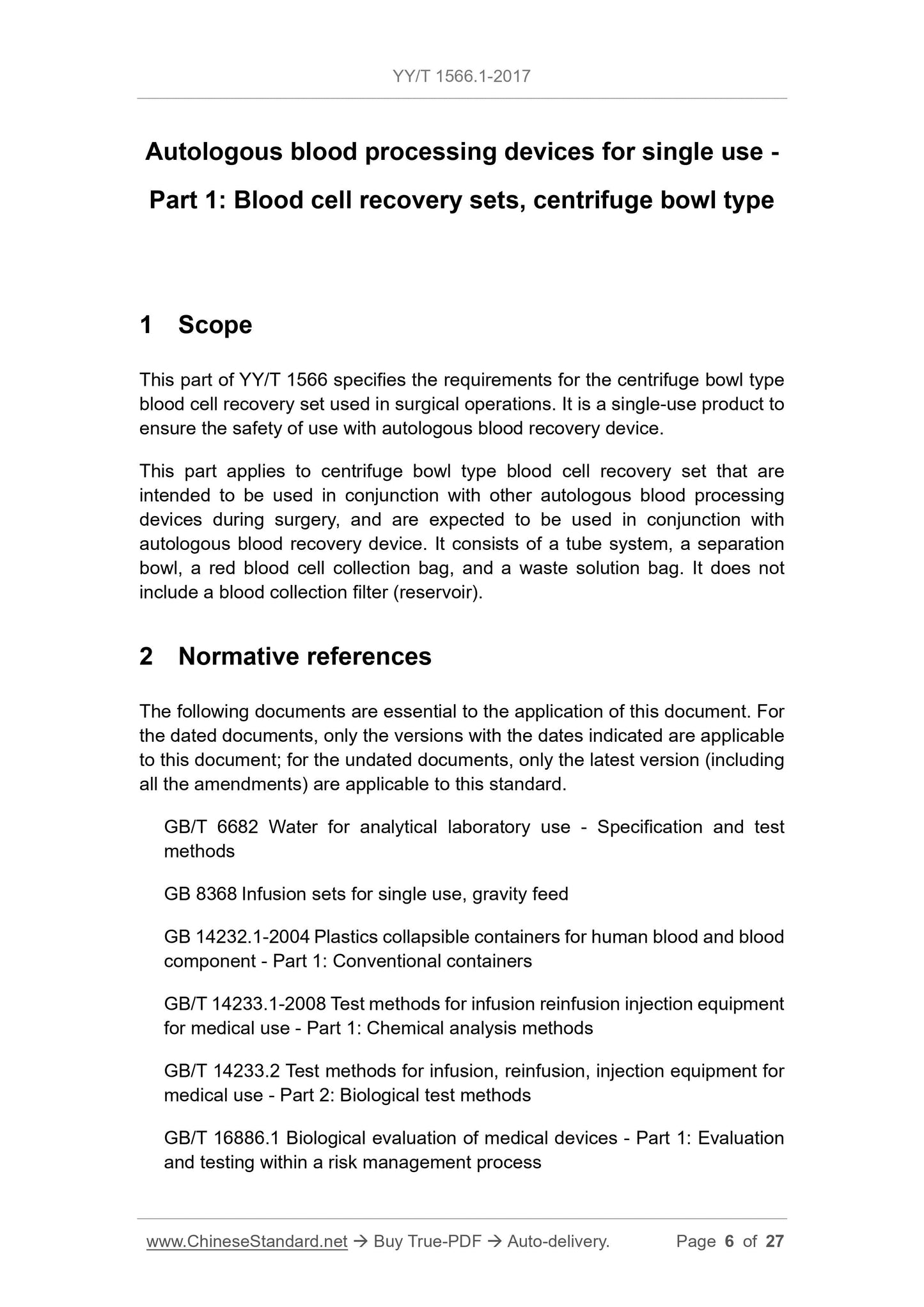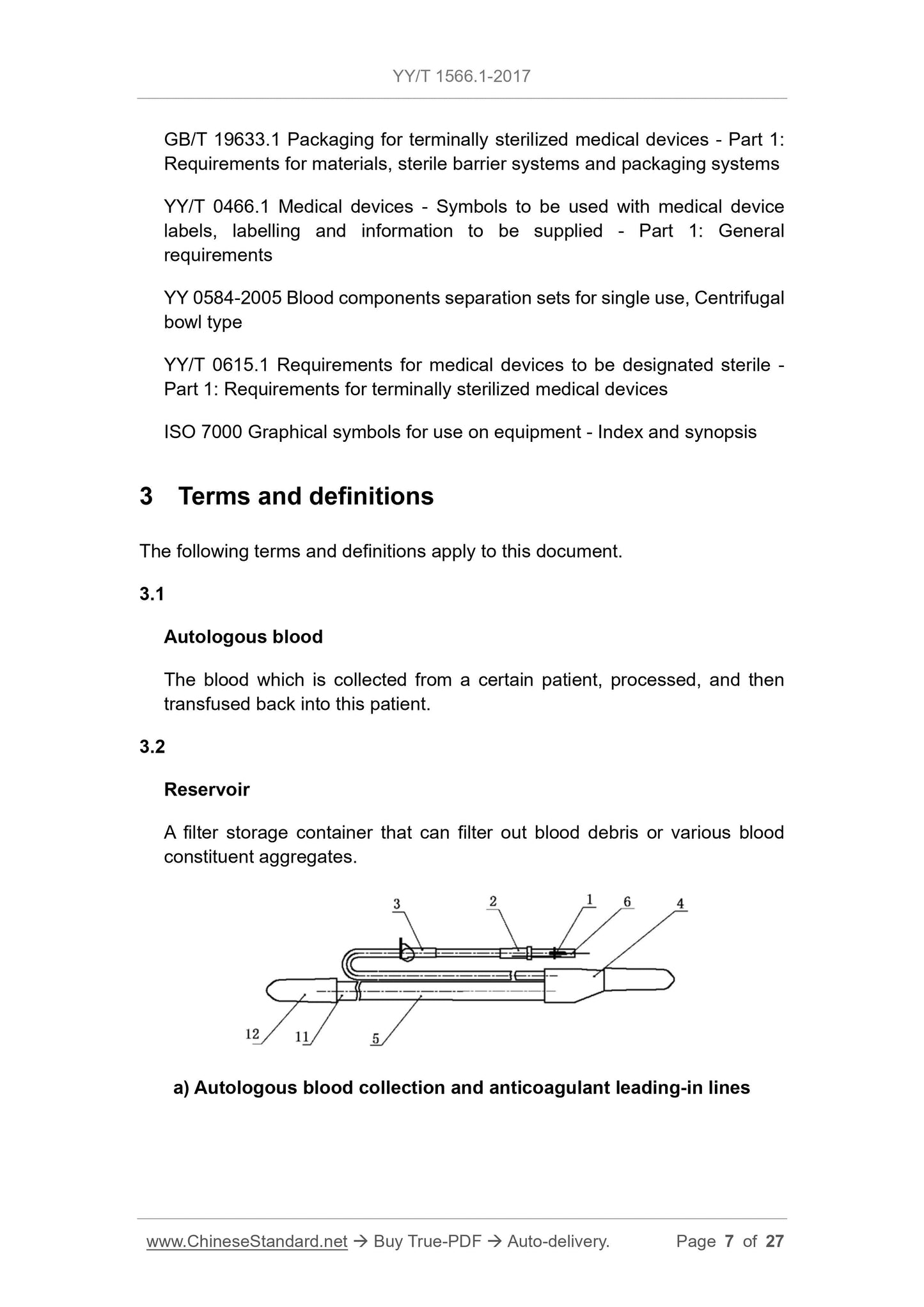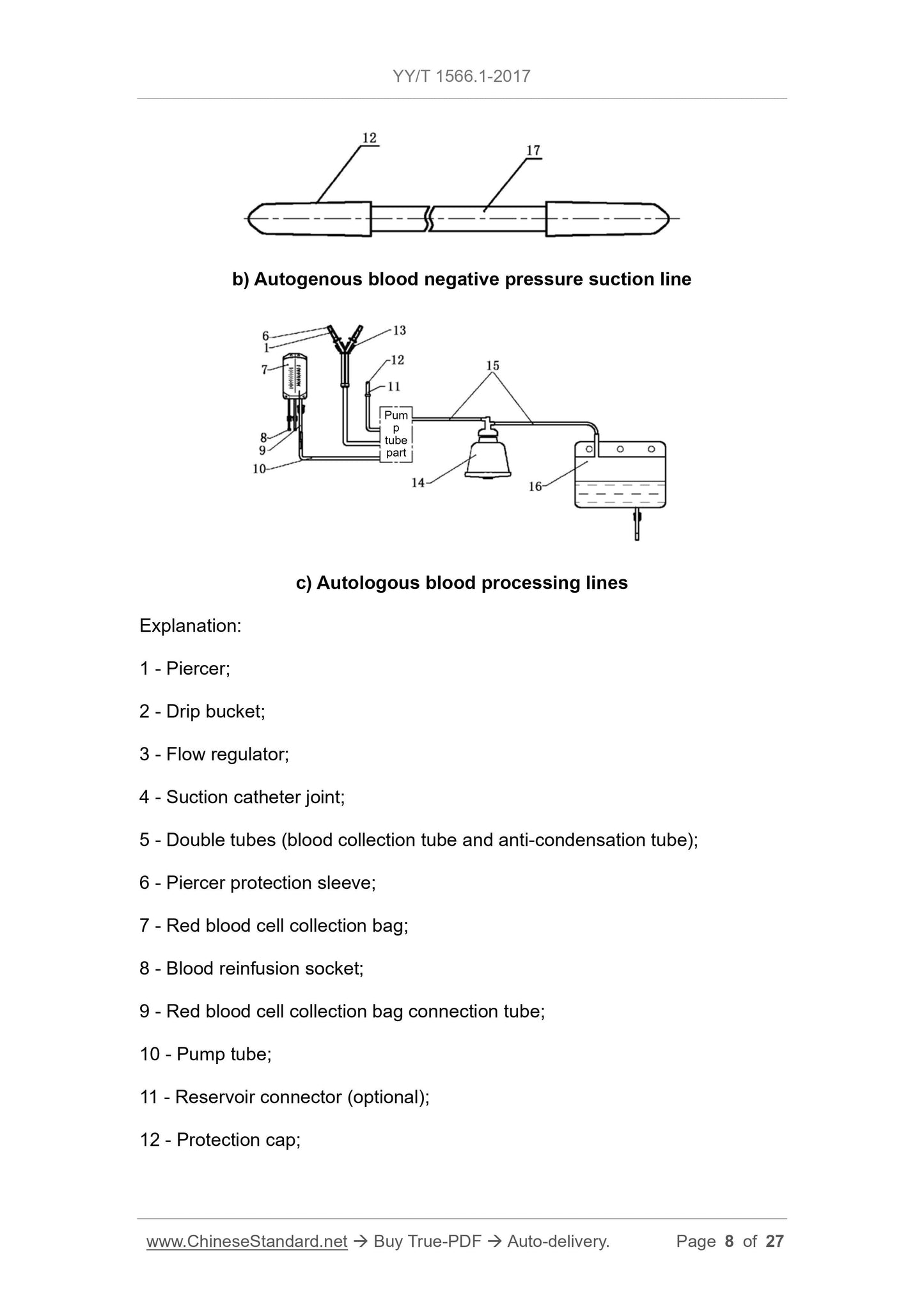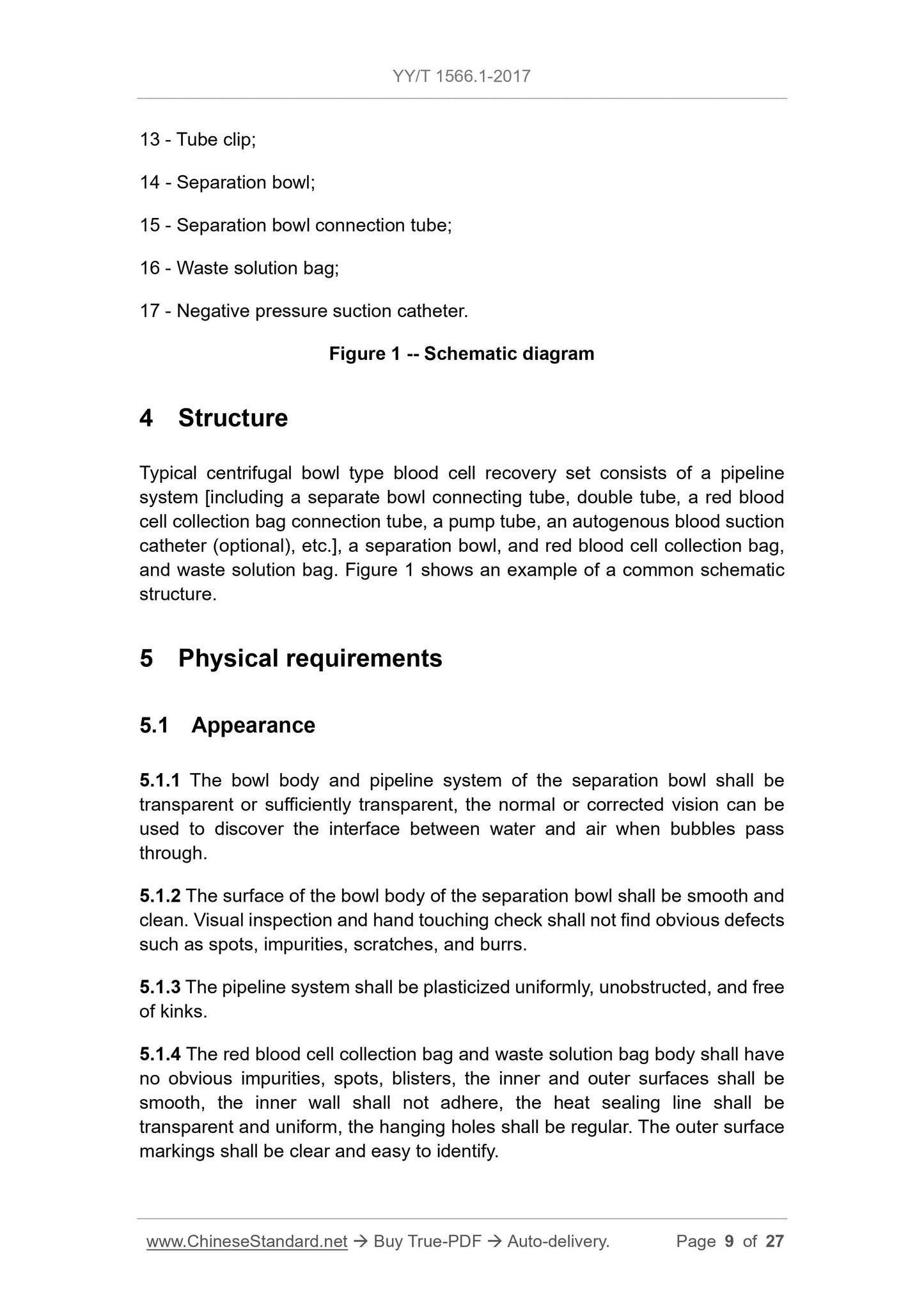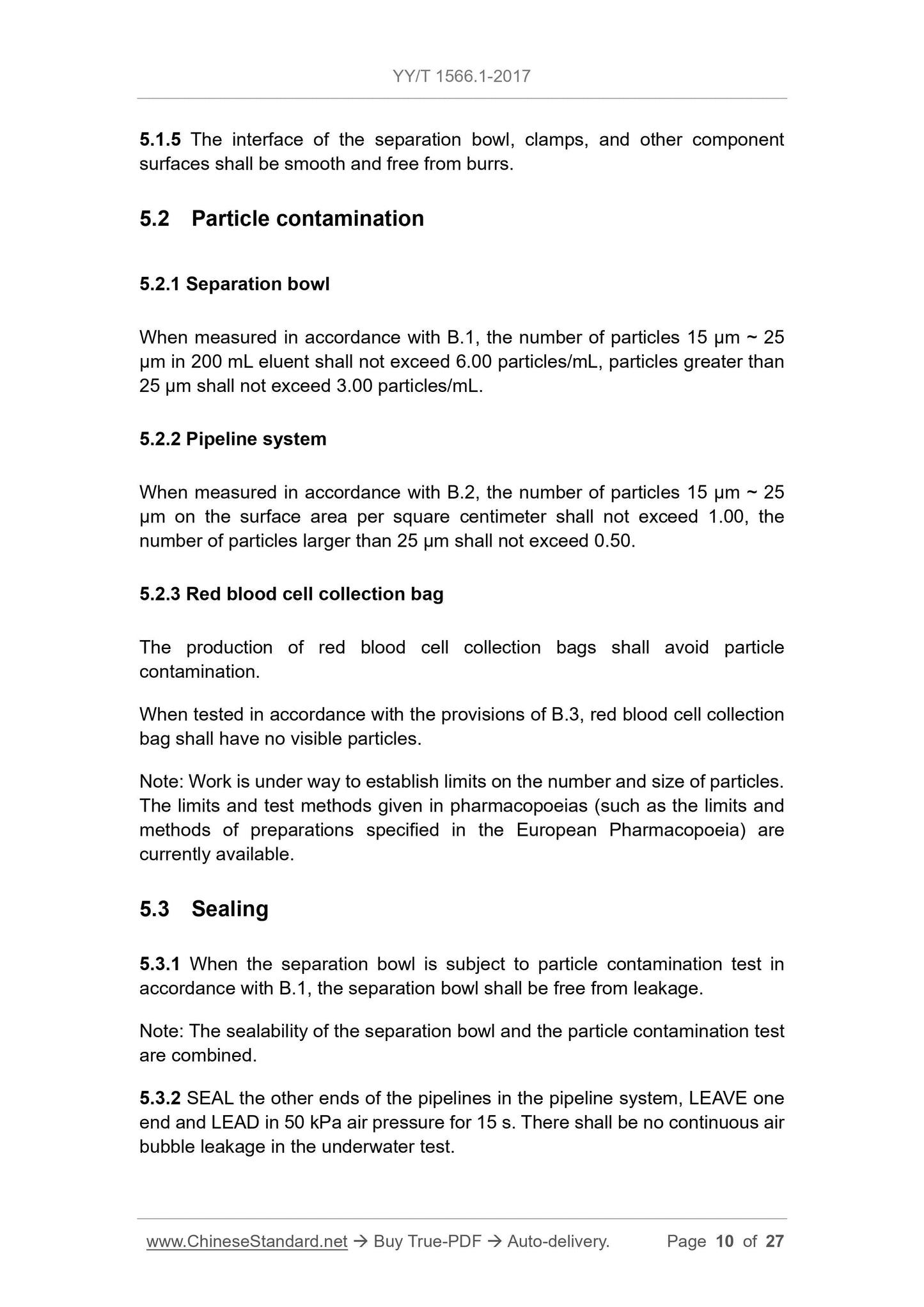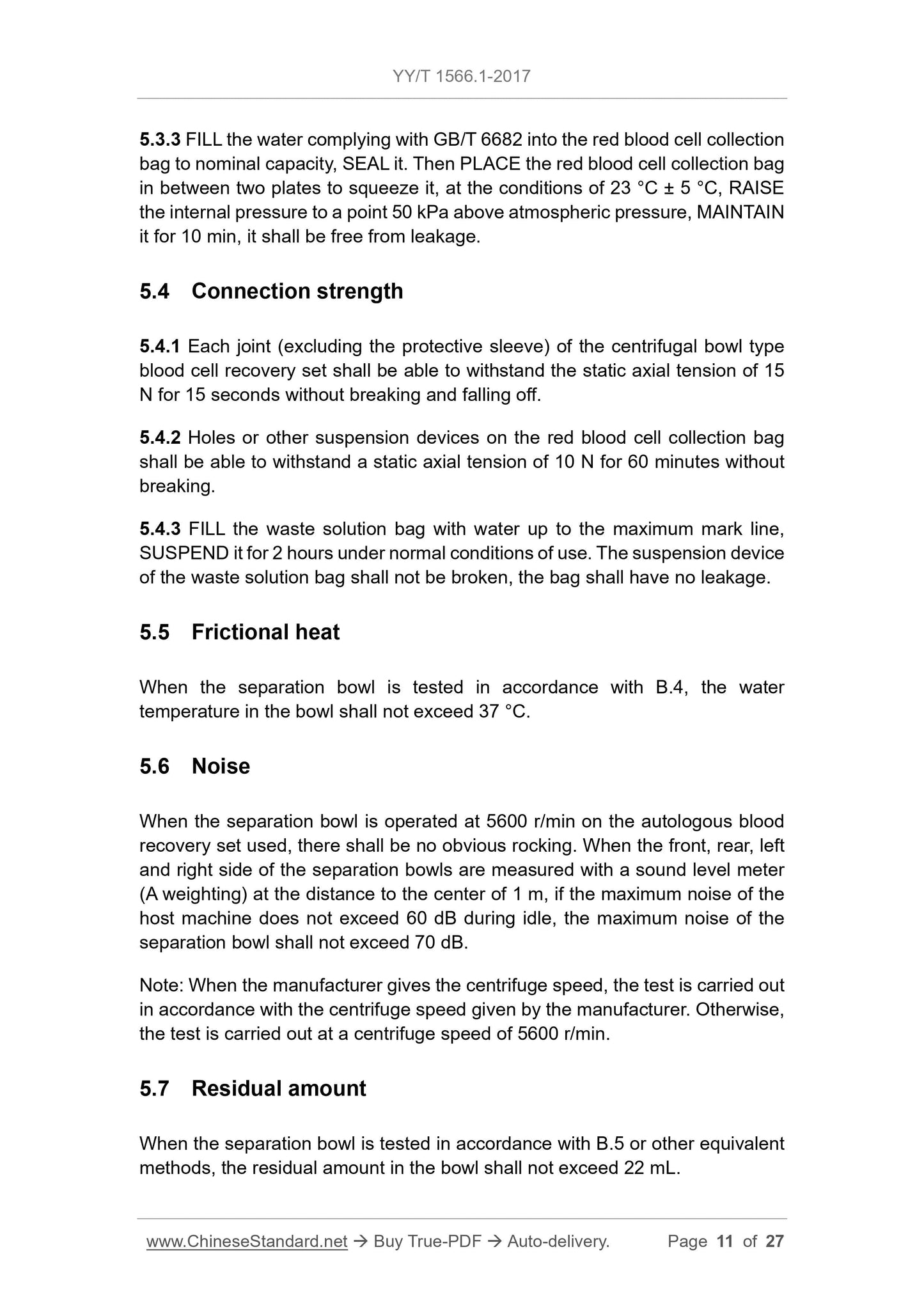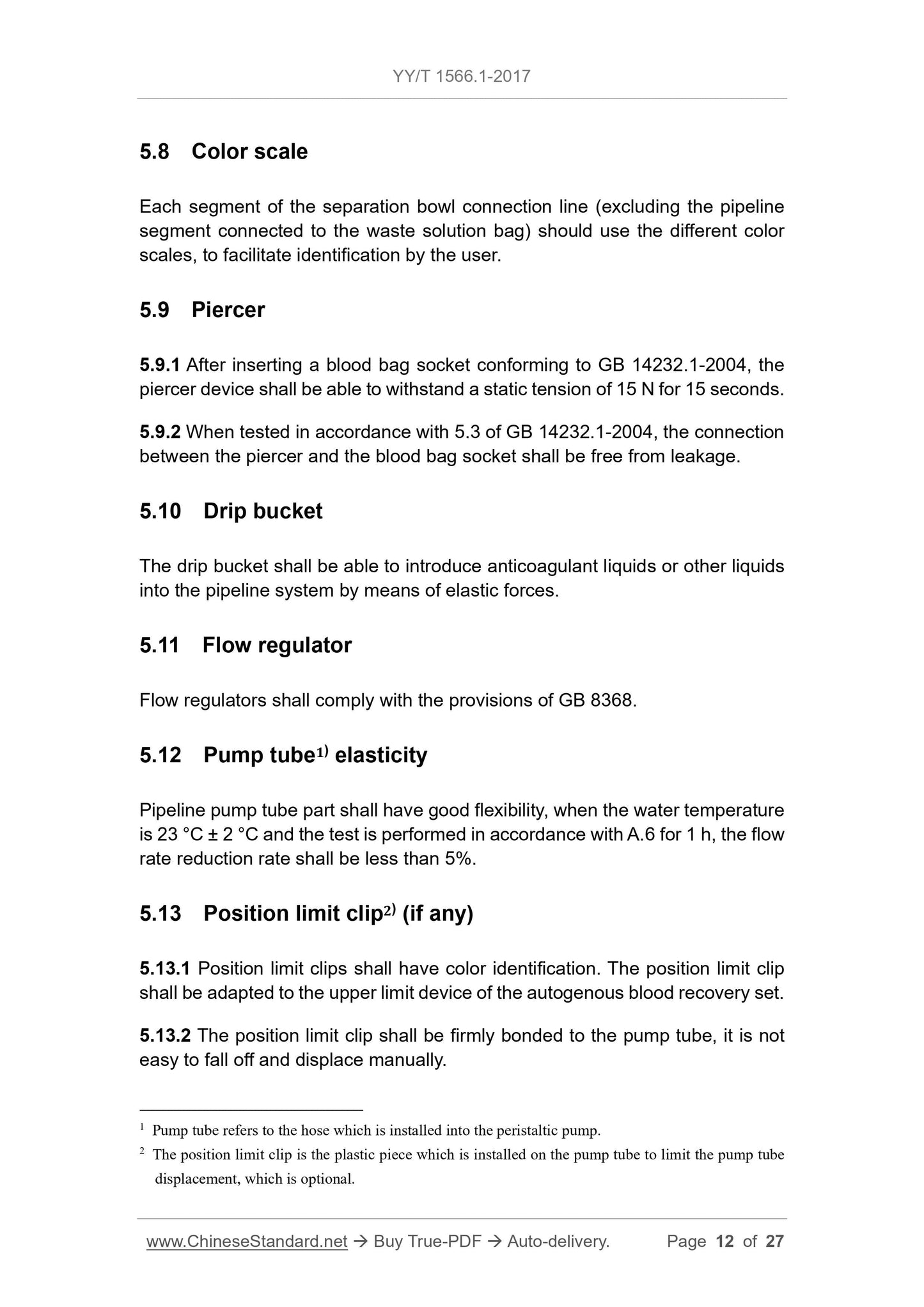1
/
of
12
www.ChineseStandard.us -- Field Test Asia Pte. Ltd.
YY/T 1566.1-2017 English PDF (YY/T1566.1-2017)
YY/T 1566.1-2017 English PDF (YY/T1566.1-2017)
Regular price
$150.00
Regular price
Sale price
$150.00
Unit price
/
per
Shipping calculated at checkout.
Couldn't load pickup availability
YY/T 1566.1-2017: Autologous blood processing devices for single use - Part 1: Blood cell recovery sets, centrifuge bowl type
Delivery: 9 seconds. Download (and Email) true-PDF + Invoice.Get Quotation: Click YY/T 1566.1-2017 (Self-service in 1-minute)
Newer / historical versions: YY/T 1566.1-2017
Preview True-PDF
Scope
This part of YY/T 1566 specifies the requirements for the centrifuge bowl typeblood cell recovery set used in surgical operations. It is a single-use product to
ensure the safety of use with autologous blood recovery device.
This part applies to centrifuge bowl type blood cell recovery set that are
intended to be used in conjunction with other autologous blood processing
devices during surgery, and are expected to be used in conjunction with
autologous blood recovery device. It consists of a tube system, a separation
bowl, a red blood cell collection bag, and a waste solution bag. It does not
include a blood collection filter (reservoir).
Basic Data
| Standard ID | YY/T 1566.1-2017 (YY/T1566.1-2017) |
| Description (Translated English) | Autologous blood processing devices for single use - Part 1: Blood cell recovery sets, centrifuge bowl type |
| Sector / Industry | Medical Device and Pharmaceutical Industry Standard (Recommended) |
| Classification of Chinese Standard | C31 |
| Classification of International Standard | 11.040.20 |
| Word Count Estimation | 18,198 |
| Date of Issue | 2017-07-17 |
| Date of Implementation | 2018-07-01 |
| Issuing agency(ies) | State Food and Drug Administration |
Share
